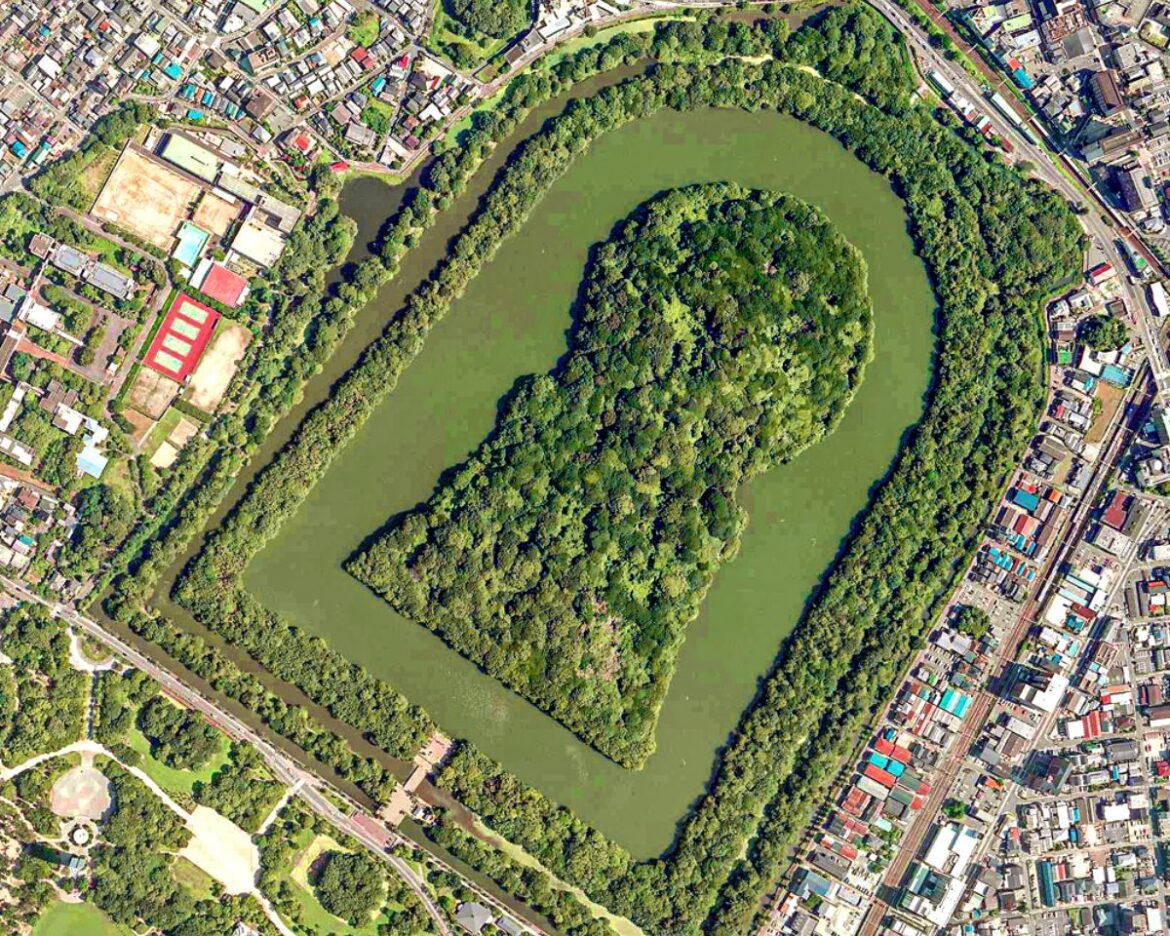Two ancient relics believed to have been buried along with Emperor Nintoku — Japan’s largest imperial tomb — have been recovered, offering new insight into the country’s early history. The items — a ceremonial knife and pieces of armor — are now confirmed to have come from the Daisen Kofun, the 5th-century burial site traditionally associated with Emperor Nintoku (313 to 399, according to the tradition).
Officials from Sakai City and experts at Kokugakuin University Museum announced the findings in June. These are the first officially authenticated artifacts ever recovered from the massive tomb, considered one of Japan’s most guarded archaeological sites.
The discovery is particularly notable because access to the mound is heavily restricted. The Japanese government protects it as a sacred site connected to the imperial family, making direct excavation nearly impossible. As a result, any confirmed objects from the tomb provide rare and valuable information.
Rediscovered relics of Emperor Nintoku found in private collection
The two artifacts had been missing for over 150 years. Historical records trace them back to an 1872 landslide that exposed part of the burial mound. At that time, Kaichiro Kashiwagi, a local builder with a deep interest in cultural preservation, sketched the items during a brief, unofficial survey. Soon after, the objects were reportedly buried again, and their whereabouts remained unknown for generations.
That changed last year when researchers at Kokugakuin University acquired the items from an art dealer. They had been held in the private collection of Takashi Masuda, a prominent businessman and art supporter who had close ties to Kashiwagi. Remarkably, the objects were still wrapped in the original paper, complete with Kashiwagi’s handwritten notes and seal.
The knife, known as a tōsu, was found in a sheath made from Japanese cypress and decorated with gold-plated copper. Its blade, broken into two pieces, was once about six inches long. The armor fragments, each only a few centimeters in size, were also examined and found to be made of iron with a gold coating — not gold-plated copper as previously believed based on 19th-century illustrations.
Symbolic significance of the relics
Experts believe the knife and armor were never meant for practical use. Instead, they likely served a ceremonial purpose as burial offerings. Their fine craftsmanship suggests they were made for someone of high status — further supporting theories about the wealth and power held by the Nintoku-era court.
Taro Fukazawa, an archaeologist from Kokugakuin University, stated that these objects reflect burial customs from a time when Japan was forming its early political structures. The use of precious metals indicates both symbolic value and advanced metalworking skills for the period.
The Daisen Kofun remains one of the most impressive and mysterious ancient sites in Japan. It spans nearly 1,600 feet in length and is surrounded by three moats. Part of the Mozu–Furuichi Kofun Group, the tomb was designated a UNESCO World Heritage Site in 2019 for its role in early Japanese state development.
Despite its size and historical importance, the identity of the person buried inside remains unconfirmed. Strict government rules allow only limited study of the mound, leaving many questions unanswered. However, this recent discovery adds a small but crucial piece to the puzzle.


AloJapan.com